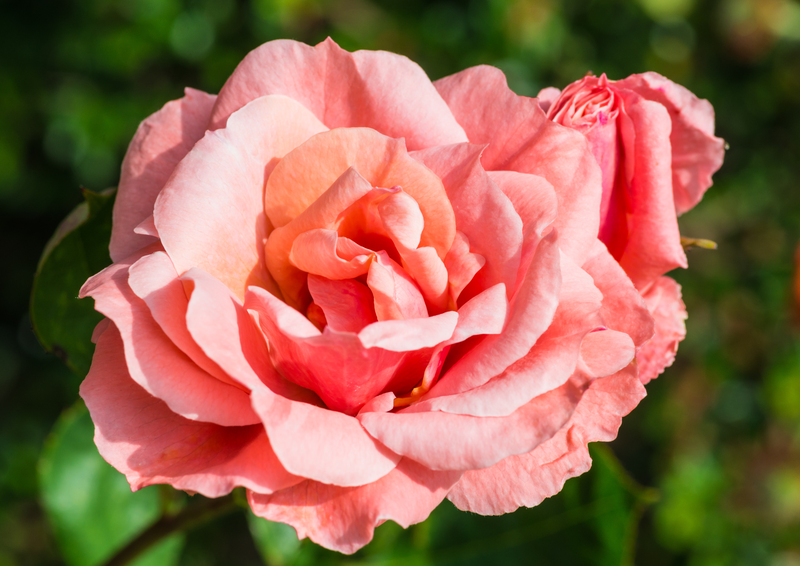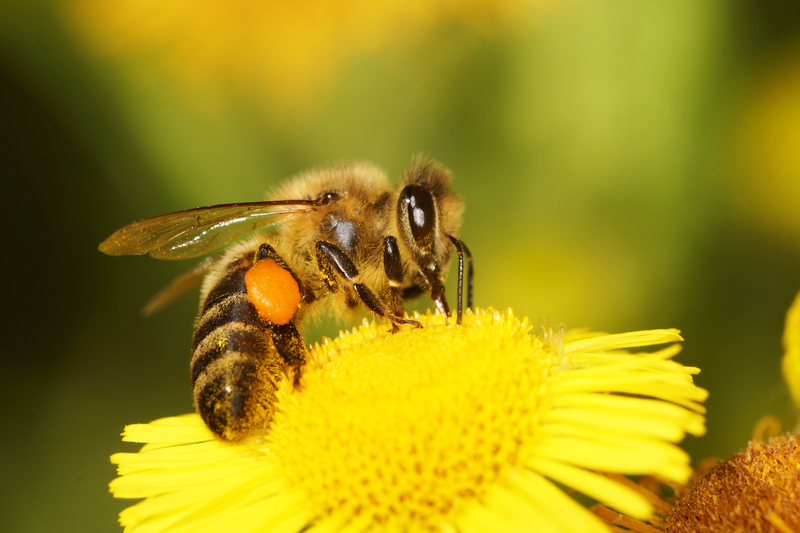Secrets to a Thriving Herb Oasis
Posted on 03/06/2025
Secrets to a Thriving Herb Oasis: Your Ultimate Guide
Are you dreaming of lush, vibrant herb gardens that fill your home or backyard with intoxicating aromas and fresh flavors? Whether you prefer cultivating a compact indoor windowsill oasis or a sprawling outdoor herb sanctuary, having your very own herb oasis is entirely within reach. In this comprehensive guide, we'll explore the unmatched pleasures of herb gardening, reveal the secrets behind a flourishing herb paradise, and equip you with expert tips for ongoing, effortless success.

Why Create a Herb Oasis?
A thriving herb oasis is much more than a collection of edible plants; it is a source of beauty, relaxation, health, and inspiration. Here's why the art of crafting a flourishing herb sanctuary has enchanted so many:
- Fresh flavors year-round: Homegrown herbs provide immediate access to aromatic leaves that elevate every recipe.
- Natural wellness: Many herbs boast healing properties and are celebrated for their health-boosting antioxidants, vitamins, and minerals.
- Stress reduction: The act of gardening helps reduce anxiety and brings peace to your daily routine.
- Decorative charm: Lush potted herbs and verdant beds enhance the beauty of indoor and outdoor spaces.
- Cost savings: Growing your own herbs can drastically cut down on grocery expenses for fresh herbs.
Choosing the Perfect Spot for Your Herb Sanctuary
One of the key secrets to a thriving herb oasis is selecting the right location. Herbs love sunlight, air circulation, and good drainage. Follow these pro tips:
1. Indoor Herb Garden Placement
- Prioritize sunlight: Most herbs (like basil, rosemary, and thyme) require at least six hours of direct sunlight. South or southwest-facing windows are ideal.
- Good air flow: Avoid placing herbs too close together or next to drafty windows.
- Utilize grow lights: If natural light is limited, invest in LED grow lights to supplement your herb oasis.
2. Outdoor Herb Oasis Considerations
- Soil quality: Choose a spot with loose, well-draining soil. Amend heavy clay or sandy soils with compost or organic matter.
- Sun exposure: Select an area that receives at least 6-8 hours of sunlight per day.
- Protection from wind: Plant taller herbs as windbreaks or use decorative garden screens.
- Easy access: Keep your herb garden close to your kitchen for convenient harvesting.
Top Herbs for a Thriving Oasis
For a truly lush herb haven, select a variety of easy-to-grow, high-yield, and flavorful plants:
- Basil: The king of herbs--great for pesto and salads.
- Mint: Refreshing and rampant, but best grown in pots to prevent spreading.
- Parsley: A nutrient-rich staple for garnishes and soups.
- Rosemary: Woody and aromatic, perfect for roasting meats and vegetables.
- Thyme: Robust and needs minimal care.
- Cilantro (Coriander): Essential for Mexican and Asian cuisine.
- Chives: Adds a mild onion flavor to many dishes.
- Sage: Earthy with lovely blue-green leaves--great for stuffing and teas.
- Dill: Vital for pickling and seafood dishes.
- Oregano: A Mediterranean favorite for sauces and pizza.
The Foundation: Soil and Fertilization Secrets
The secret to a thriving herb oasis lies beneath the surface--in the right soil! Here's how to cultivate the perfect growing medium:
- Loose, well-draining soil: Most herbs despise 'wet feet.' A light, loamy mix is ideal.
- Rich in organic matter: Blend in aged compost or worm castings for extra nutrients.
- pH level: Most herbs prefer a slightly acidic to neutral soil (pH 6.0-7.0).
- Mulch: A thin layer of organic mulch (like straw or shredded leaves) conserves moisture and deters weeds.
Fertilizing for Optimum Growth
- Less is more: Herbs are sensitive to fertilizer. Use a balanced, diluted organic fertilizer only every 4-6 weeks during the growing season.
- Avoid overfeeding: Excess nitrogen encourages lush foliage but may dilute flavor.
- Liquid seaweed or compost tea: Excellent natural boosters for your herb haven.
Irrigation Insights: Watering Your Herb Garden
Proper watering is one of the most essential secrets to a thriving herb oasis. While herbs need consistent moisture, they do not tolerate prolonged soggy conditions.
- Check the soil: Insert your finger about an inch deep; water only when the soil feels dry at that depth.
- Morning routine: Watering early in the day minimizes evaporation and fungal risk.
- Bottom watering: For pots, add water to the saucer and let roots absorb moisture naturally.
- Avoid the leaves: Wet foliage is susceptible to disease and rot.
Herb Maintenance Secrets: Pruning, Harvesting, and Propagation
Pruning for Health and Abundance
- Pinch back regularly: Remove the tips of stems to encourage bushier, fuller plants.
- Prune flowers: Most culinary herbs taste best before flowering. Remove blooms promptly--except when collecting seeds.
- Shape matters: Prune to maintain form and to boost new leaf production.
Harvesting Know-How
- Harvest often: Frequent harvesting signals the herb to send up fresh, tender shoots.
- Use sharp scissors: Clean cuts prevent plant damage and disease.
- Morning harvest: Oils, and therefore flavors, are most potent before midday heat.
Easy Propagation for Perennial Abundance
- Divide established clumps: Many herbs like chives or mint multiply quickly and can be split in early spring.
- Take cuttings: Basil, mint, and oregano root readily in water or light potting mix.
- Collect seeds: Allow some plants to go to seed and propagate your own 'herb oasis' for years to come.
Pest Management: Keeping Your Herb Oasis Pest-Free
One of the most frustrating challenges to creating your own herb sanctuary is dealing with unwelcome guests. Here are eco-friendly strategies:
- Companion planting: Mixing herbs and flowers (like marigolds or nasturtiums) confuses pests and attracts pollinators.
- Diatomaceous earth: Sprinkle a light dust in and around plants to deter crawling insects.
- Manual inspection: Regularly check leaves for signs of infestation and remove pests by hand.
- Homemade sprays: Use mild soap solutions or neem oil to control aphids, mites, and whiteflies.
- Healthy soil: Strong, well-fed herbs resist disease and pests naturally.
Seasonal Tips for Year-Round Herbal Abundance
Spring and Summer
- Start seeds indoors: Get a jump on the season by germinating seeds under lights before the last frost.
- Transplant after frost: Move tender herbs outside only after danger of frost has passed.
- Vigilant weeding: Remove competition so herbs can thrive.
Autumn
- Harvest excess growth: Snip and dry or freeze herbs for winter use.
- Plant hardy perennials: Now is the time to set out rosemary, thyme, or sage for a winter head start.
- Mulch: Protect roots with extra mulch as temperatures drop.
Winter
- Grow indoors: Move sensitive herbs to sunny windowsills or under grow lights.
- Reduce watering: Dormant herbs need less moisture during colder months.
- Watch for drafts: Keep indoor plants away from cold or hot air vents.
Creative Ideas to Enhance Your Herb Sanctuary
- Vertical gardens: Perfect for limited spaces--use hanging pockets, stacked pallets, or wall mounted containers.
- Herb spirals: A visually stunning, permaculture-inspired design that offers microclimates for diverse herbs.
- Themed beds: For example, a 'pizza garden' with basil, oregano, and parsley or a 'tea corner' with mint and chamomile.
- Edible borders: Let your herb oasis frame walkways, patios, or flower beds for easy harvest and great looks.
- Self-watering containers: Reduce maintenance by using specialty pots or wicking systems.
Common Mistakes (and How to Avoid Them)
- Overwatering: Herbs dislike standing in soggy soil and will rot if overwatered.
- Neglecting to prune: Failure to pinch back or prune leads to leggy, less productive plants.
- Wrong plants in the wrong place: Observe each herb's need for sunlight, space, and soil type.
- Ignoring pests and diseases: Regularly inspect your herb garden for early intervention.
- Using chemical sprays: Harsh chemicals spoil the flavor and safety of edible herbs--stick to natural solutions.
Preserving Your Bounty
A true herb oasis provides more than you can use fresh, but don't let that abundance go to waste. Preserve your harvest using these simple methods:
- Air drying: Bundle and hang herbs upside down in a cool, dry place to retain color and flavor.
- Freezing: Chop and freeze herbs in ice cube trays with water or olive oil for easy portioning.
- Infused oils and vinegars: Create gourmet gifts by steeping herbs in high-quality oils or vinegars.
- Homemade blends: Mix dried herbs for custom rubs, teas, or seasoning blends.

Frequently Asked Questions
How can I start a successful herb garden if I'm a beginner?
Start with a few easy-to-grow herbs like basil, chives, or mint. Use high-quality soil, ensure 6-8 hours of sunlight, and avoid overwatering.
What herbs grow best together?
Mediterranean herbs (like rosemary, oregano, thyme, and sage) thrive together, as do moist-soil lovers such as basil, parsley, and cilantro. Mint is best kept alone due to its aggressive spread.
How often should I fertilize?
Most herbs require light feeding every 4-6 weeks with an organic or diluted fertilizer. Over-fertilization can harm flavor and attract pests.
Can I grow an indoor herb oasis without direct sunlight?
While some herbs tolerate lower light, most need supplemental grow lights to truly thrive indoors away from a sunny window.
Conclusion: Cultivating Your Own Herb Oasis
With a little planning, patience, and the right growing secrets, your dream of a lush herb retreat can become reality--providing fresh flavors, aromatic beauty, and natural wellness all year long. Start with a few favorite herbs, follow these proven tips, and soon you'll be enjoying the abundant rewards of your own thriving herb sanctuary.
Ready to grow? Roll up your sleeves and begin crafting your personal herb oasis--homegrown, healthy, and absolutely magical!

